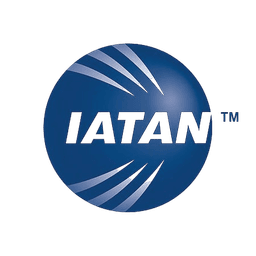
In the shadow of Rwanda’s Volcanoes National Park, a remarkable tradition takes place every year.
Kwita Izina, Rwanda’s annual gorilla naming ceremony,holds a deep cultural and ecological significance for the country. Kwita Izina is a symbol of Rwanda’s innovative approach to wildlife conservation, community engagement, and national pride. But where did it come from? And why has it become one of the most iconic cultural celebrations in modern Rwanda?
The origins of Kwita Izina
The idea of naming newborns is not new to Rwandan culture. Traditionally, naming ceremonies are a vital part of Rwandan society, marking a child's acceptance into the community and bestowing hopes and blessings for their future. It’s a time when families, neighbors, and elders gather to celebrate life, share wisdom, and reinforce social bonds.
When Rwanda launched its formal gorilla conservation program, the decision to incorporate a naming tradition for baby gorillas was deeply intentional. Officials understood that these majestic animals, who share around 98% of their DNA with humans, were not just wildlife — they were part of Rwanda’s extended family, vital to both the country's ecosystem and its cultural identity.
Thus, in 2005, Kwita Izina was born, modeled after the human naming ceremonies that Rwandans have celebrated for centuries.
Why naming matters
Section Type: standardWidthImageS
Scenes from the Kwita Izina ceremony in Rwanda. (Photo: UWIMPUHWE Va)

In conservation, naming a gorilla is more than symbolic. Every named gorilla is carefully monitored throughout its life, making it easier for park rangers, researchers, and veterinarians to track health, behavior, and family dynamics.
It also personalizes conservation. By giving a baby gorilla a name, Rwandans and visitors alike develop a closer emotional connection to these animals, seeing them not as faceless wildlife, but as individuals with stories, families, and futures worth protecting. Each name carries meaning — often reflecting the circumstances of the gorilla’s birth, traits of its family, hopes for conservation, or broader themes like peace, unity, or resilience.
Community involvement
One of the most powerful aspects of Kwita Izina is how deeply it ties conservation to community. In the early years of gorilla tourism, there were tensions between protecting the animals and the needs of local communities who lived near the park. Over time, Rwanda shifted to a model of community-based conservation, where people living around protected areas are direct beneficiaries of tourism revenue.
Thanks to programs like Rwanda’s Tourism Revenue Sharing Scheme, a portion of the money earned from gorilla trekking permits is reinvested into community projects — building schools, clinics, clean water systems, roads and the like. Kwita Izina is a public affirmation of the partnership between conservation and community development. Every year, local leaders, schoolchildren, farmers, and elders participate, showing that conservation is not just the business of government or NGOs — it belongs to everyone.
A global stage
Section Type: standardWidthImageS
Witness gorillas in their natural habitat with a gorilla trekking adventure!

Over the years, Kwita Izina has evolved from a local event into an international phenomenon. High-profile figures from around the world have taken part in the ceremony as “namers,” including celebrities like Naomi Campbell, conservationists like Dr. Jane Goodall, business leaders, and politicians.
This global spotlight has helped Rwanda reposition itself not only as a leader in conservation but also as a safe, thriving destination for eco-tourism. Gorilla trekking is now one of the country's top attractions, with visitors traveling from all corners of the world for the chance to meet these gentle giants in their natural habitat.
By linking conservation with culture, and local tradition with global attention, Rwanda has created a model that many other countries seek to replicate.
Hope and resilience
Kwita Izina is also deeply symbolic of Rwanda’s broader national journey. After the devastating events of 1994, Rwanda committed itself to rebuilding — not just physically, but socially and environmentally. Protecting endangered species like the mountain gorilla became part of that healing process.
In many ways, the gorillas' story mirrors Rwanda’s: from near extinction to a cautious but determined recovery. When Kwita Izina began, there were just over 380 mountain gorillas in the region. Thanks to sustained conservation efforts, that number has risen to over 600 in the Virunga Massif alone, contributing to the reclassification of mountain gorillas from “critically endangered” to “endangered” by the IUCN.
Kwita Izina has grown into a week-long festival celebrating conservation, culture, and sustainable development. Activities include conservation conferences, community visits, cultural performances, exhibitions, and even cycling events like the Tour du Rwanda.
Lasting legacy
Kwita Izina is a beautiful reminder that traditions are not static — they can evolve, adapt, and inspire new generations. By blending a deeply Rwandan custom with a visionary approach to conservation, Rwanda has shown the world how culture and nature can walk hand in hand.
As Rwanda continues to lead in conservation and sustainable tourism, Kwita Izina stands as a shining example of what can be achieved when we honor both our heritage and our future.
Credit to Valento Uwimpuhwe for the cover image of this article.
Section Type: cta
You can be a part of this conservation success story by traveling to Rwanda and seeing the gorillas in their natural habitat. Check out our most popular gorilla trekking itineraries in Rwanda, then speak to a Destination Expert about making it your own.


Copyright © 2025 SA Luxury Expeditions LLC, All rights reserved | 95 Third Street, 2nd floor, San Francisco, CA, 94103 | 415-549-8049
California Registered Seller of Travel - CST 2115890-50. Registration as a seller of travel does not constitute approval by the state of California.










